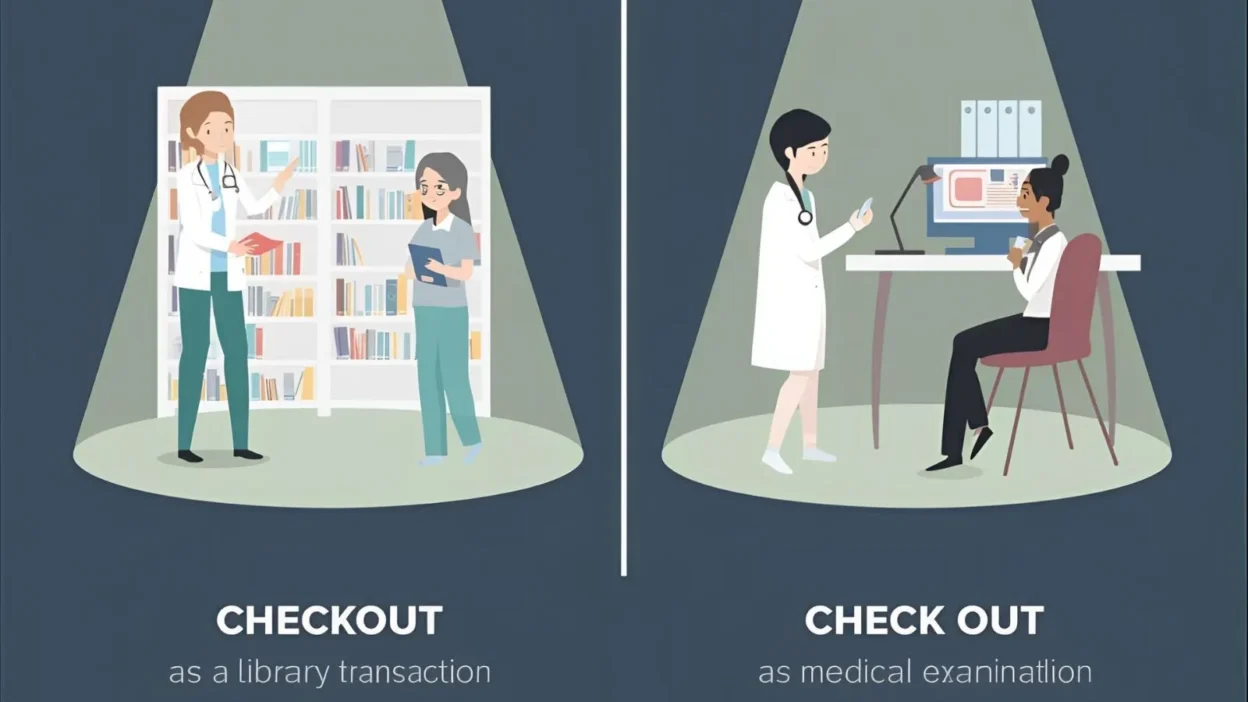What’s the Difference For 2026?
Have you ever paused while typing an email or writing online, unsure whether to use checkout or check out? You are not alone.
Many English learners and even native speakers search for this keyword because spelling differences can change meaning, style, and even grammar.
The confusion comes from the fact that “checkout” can be a noun or adjective, while “check out” is usually a phrasal verb.
To add more complexity, British and American English often treat compound words differently, leaving writers puzzled.
This guide clears up the confusion once and for all. We will explore the quick answer, history of the word, spelling rules, and common mistakes.
You will also see real-world examples, global usage data, and a handy comparison table.
By the end, you will know exactly when to write checkout and when to write check out—whether for casual social media, formal emails, or professional documents.
Checkout or Check Out – Quick Answer
- Checkout (one word) → Used as a noun or adjective.
- Example (noun): I waited in the checkout line.
- Example (adjective): The store installed new checkout counters.
- Example (noun): I waited in the checkout line.
- Check out (two words) → Used as a verb phrase.
- Example: I need to check out this book from the library.
- Example: Let’s check out the new restaurant in town.
- Example: I need to check out this book from the library.
✅ Quick Rule: If it is an action, use check out. If it is a thing or place, use checkout.
The Origin of Checkout or Check Out
The phrase “check out” comes from the verb “to check,” which originally meant “to stop or restrain” in Old French (eschequier). Over time, it evolved in English to mean “examine” or “verify.”
“Check out” as a verb phrase became common in the early 1900s, especially in American English, meaning to “inspect” or “settle an account.” Later, as language compressed, “checkout” (noun form) emerged to describe the place where payments are made in shops or hotels.
The difference exists because English often turns phrasal verbs into nouns by writing them as one word (e.g., setup vs. set up, login vs. log in).
British English vs American English Spelling
Both British and American English use checkout and check out, but Americans are more likely to merge the word into a single noun form, while British usage still allows for flexibility.
Comparison Table
| Usage | American English Example | British English Example |
| Noun (one word) | Please go to the checkout counter. | She is at the checkout till. |
| Verb (two words) | Let’s check out that new café. | We should check out the museum. |
In both regions, the verb remains two words. The noun tends to appear more often as one word in American English.
Which Spelling Should You Use?
- If writing for a US audience → Use checkout (noun) and check out (verb).
- If writing for a UK or Commonwealth audience → Both forms are understood, but checkout (noun) is slightly less formal.
- For global or online audiences → Stick with checkout for the noun (e.g., e-commerce) and check out for the verb.
👉 Safe rule: Always keep the verb separate, and use checkout as the noun.
Common Mistakes with Checkout or Check Out
- ❌ I will checkout the website.
✅ I will check out the website. - ❌ The check out line was long.
✅ The checkout line was long. - ❌ Please check-out before 11 a.m. (hyphen not needed)
✅ Please check out before 11 a.m. - ❌ Where is the check out counter?
✅ Where is the checkout counter?
Checkout or Check Out in Everyday Examples
- Emails (formal): Please check out the attached document before tomorrow’s meeting.
- News headlines: Supermarkets upgrade self-checkout machines nationwide.
- Social media: Check out my new vlog on YouTube!
- Business writing: The checkout process must be quick to reduce cart abandonment.
Checkout or Check Out – Google Trends & Usage Data
According to Google Trends, checkout (noun) is most popular in e-commerce and retail contexts, especially in the US, Canada, and Australia. Meanwhile, check out (verb) dominates in general conversation, social media, and travel-related searches worldwide.
Keyword Comparison Table
| Form | Function | Example | Popularity by Region |
| Checkout | Noun | The checkout counter is busy. | US, e-commerce, retail sites |
| Check out | Verb | We should check out that café. | Global everyday usage |
FAQs about Checkout or Check Out
Q1. Is “checkout” one word or two?
Both exist: checkout is a noun, check out is a verb.
Q2. Can I say “checkout my profile”?
No. The correct form is check out my profile.
Q3. Why do we merge words like “checkout”?
English often turns phrasal verbs into nouns (e.g., setup vs. set up).
Q4. Is “checkout” formal?
Yes, in business and retail contexts. It is widely accepted globally.
Q5. Do British people use “checkout”?
Yes, but they may also say till in stores.
Q6. Which is correct: “checkout time” or “check out time”?
Checkout time (noun phrase) is correct.
Q7. Is “check-out” with a hyphen correct?
Not anymore. Modern usage avoids the hyphen.
Conclusion
The difference between checkout and check out is simple once you know the rule: use checkout when talking about a place, process, or noun, and check out when describing an action. American English prefers merging the noun, while British English allows for more variation. Most importantly, the verb should always remain two words.
Whether you are writing an email, managing an e-commerce site, or just posting on social media, using the correct form will make your writing clear and professional. Next time you hesitate between “checkout” and “check out,” remember: if it’s an action, keep it apart; if it’s a thing, keep it together. That’s the easiest way to check out this common confusion—pun intended.



